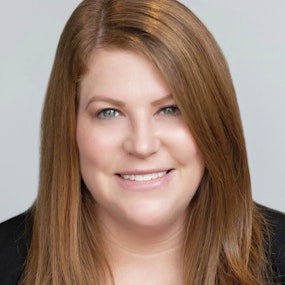ROBERT JOHNSON:
This is the award-winning Public Health Review Morning Edition for Tuesday, January 30, 2024. I'm Robert Johnson. Now, today's news from the Association of State and Territorial Health Officials.
KAYLEY HUMM:
The Overdose Prevention Policy Considerations Report outlines four key policy considerations for preventing overdose.
JOHNSON:
A new ASTHO report outlines a series of overdose prevention policies for consideration by public health agencies. ASTHO's Kayley Humm says the policies reflect an emphasis on addressing health equity and stigma.
HUMM:
The four policy considerations they should consider are increasing community distribution of naloxone, legalizing drug checking equipment, removing the barriers to establishing syringe service programs, and enhancing substance use peer support programs.
JOHNSON:
Humm says the report includes links to resources and articles that explain and support the recommendation.
HUMM:
Each policy recommendation in this report highlights considerations for incorporating health equity and stigma reduction into policies. And state and territorial health officials and agencies all have unique communities.
JOHNSON:
Humm adds the goal is to implement policy approaches that remove barriers to prevention and treatment.
HUMM:
For example, by expanding access to syringe service programs to rural areas or amending drug paraphernalia laws to allow for possession, distribution, and use of fentanyl test strips, both increase access to and uptake of harm reduction services.
JOHNSON:
You can download your copy of the report using the link in the show notes.
Winters in Buffalo and surrounding areas are always a challenge, but storms that hit the area in 2022, were especially bad. Sarah Bonk is with Erie County in Upstate New York.
SARAH BONK:
What we know from that 2022 storm season is that there's a lot of work that can be done before the storm even starts to get people into a preparedness stance.
JOHNSON:
Bonk says communication was a critical part of the response to storms that were among the worst on record.
BONK:
Really one of the biggest things was making sure that we had effective coordination between those call takers, the 911 dispatchers, those plow drivers, the county utilities, and really just making sure that everybody was trying, to the best of our capabilities, to remain in communication and exchange information in a way that would keep everybody on the same page as we work to really address those storms effectively.
JOHNSON:
Since then, Bonk says agencies have worked to break down organizational silos and include human service organizations in preparedness plans.
BONK:
It's really about involving partners in community government and in the community to make sure that those conversations are happening, but to also make the investment in public health in an emergency planning and an emergency response.
JOHNSON:
Also, today, ASTHO wants to help you learn how to work with partners to expand access to pharmacist-prescribed contraception. O'Keyla Cooper has more about an event happening this afternoon.
O'KEYLA COOPER:
There's still time to join ASTHO's Contraception Access Learning Community today, January 30, from 2 - 3:30 p.m. ET for a virtual event on pharmacist-prescribed contraception. In collaboration with Birth Control Pharmacist, the webinar will address clinical training, workforce engagement, and highlight examples of successful PPC implementation. You can still register by clicking the link in the show notes.
JOHNSON:
Finally this morning, ASTHO produces a series of regular newsletters that can be delivered to your email inbox. They cover policy, public health news and legislative action. Look over the list and join one or more by clicking the link in the show notes.
Before we go, a reminder also to follow this newscast on your podcast player so you don't miss a single report and connect with ASTHO on social media. We're on LinkedIn, Twitter, and Facebook.
That'll do it for today. We're back tomorrow morning with more ASTHO news and information. I'm Robert Johnson. You're listening to the award-winning Public Health Review Morning Edition. Have a great day.






